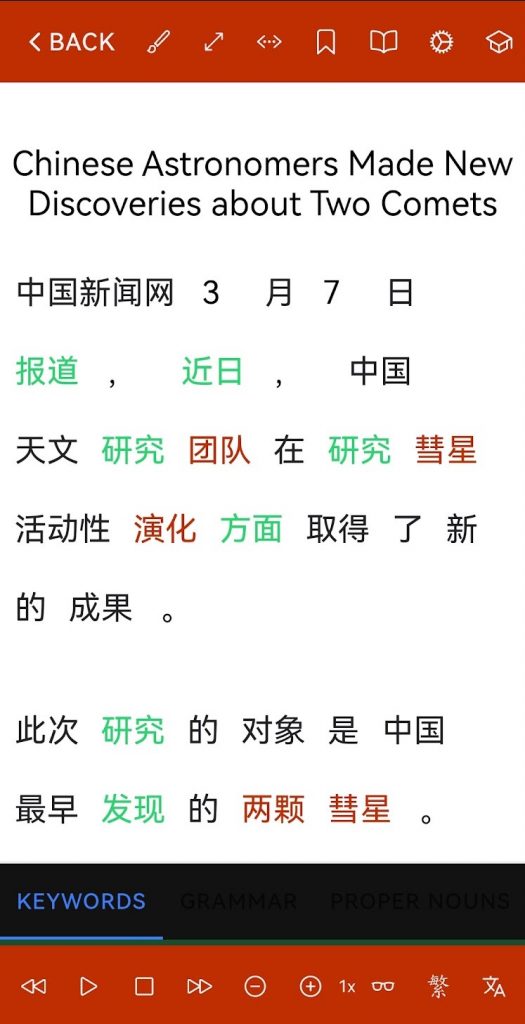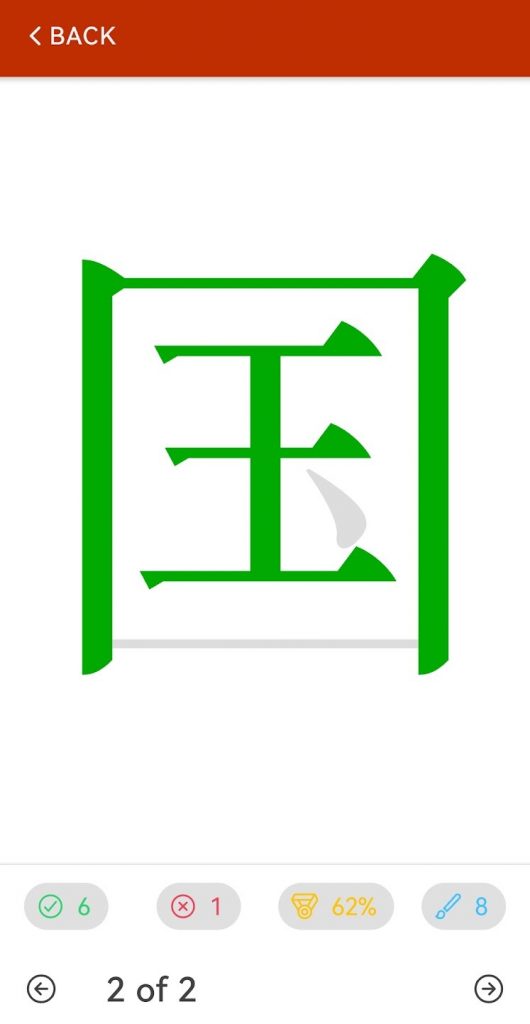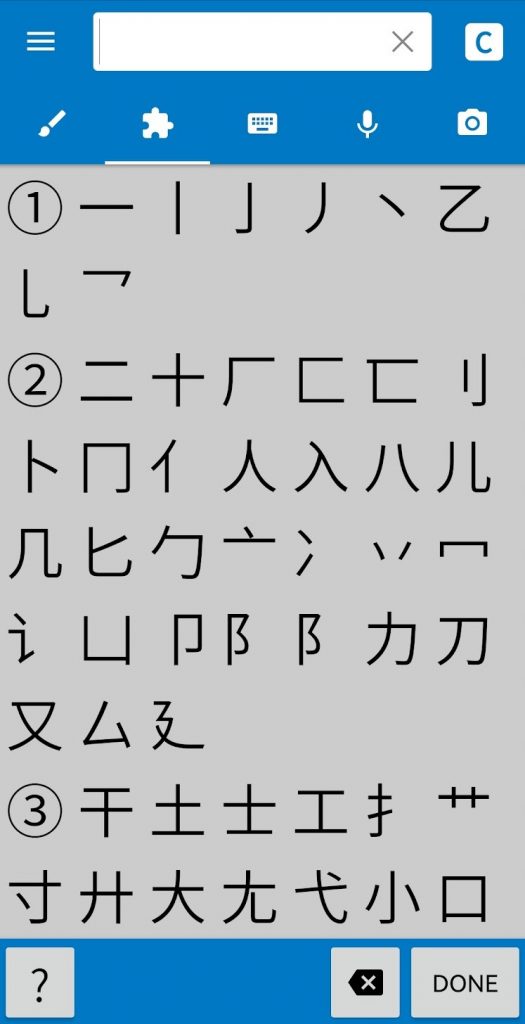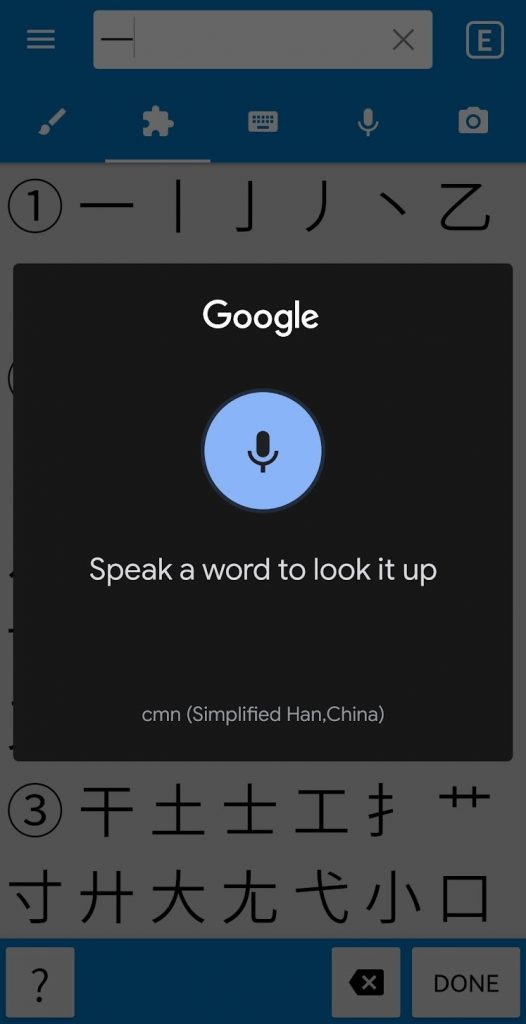
When studying Chinese, learning large amounts of vocabulary is an inescapable part of the process, for a broad vocabulary is a prerequisite to effective communication. The first step for beginners typically involves learning the most common, high-frequency words in Chinese. Progress can be fast at this stage and you may feel a gratifying “beginner’s high”, as you’re able to understand a high proportion of basic-level materials. But eventually it comes to learning the masses of lower-frequency words, which are necessary to advance to high levels. This part can feel arduous, as progress becomes incremental and your efforts lead to diminishing returns. How about working smarter instead of harder? In this article, we’re going to explore how to improve Chinese vocabulary at any level using recommended strategies and cutting-edge technologies.
How long does it take to learn Chinese vocabulary?
This depends on numerous factors including the learner’s natural aptitude, motivation, time spent with the target language, and which language(s) they already speak. Assuming you’re coming from a monolingual English background, there are several reasons why it may take more time and effort to learn Chinese vocabulary than other languages:
- The lack of congruence between English words and Chinese words.
- Tones. To be understood when speaking, you must learn the correct tones when you learn a new word.
- Characters. To be able to read and write in Chinese, you have to learn characters.
It can take longer to assimilate and activate new Chinese vocabulary, because of the multifaceted nature of Chinese words. You may be able to read a word, but can you pronounce the tones correctly? If you can pronounce it, can you also write it?
How can I memorize Chinese vocabulary?
There is plenty of logic and order within the Chinese language itself, just as there is in other languages, which means that it gets easier over time (notwithstanding language learning plateaus that occur). As one example, the character “电”, which means electric, appears in all these words:
- 电脑 diànnǎo – computer
- 电话 diànhuà – phone call
- 电视 diànshì – TV
- 电子邮件 diànzǐ yóujiàn – email
- 电梯 diàntī – elevator
There are theories about how many times you need to encounter something new before it becomes committed to memory – folk wisdom says seven times, but your mileage may vary. Suffice to say, it is perfectly normal to learn, forget and re-learn several times in the process of acquiring new vocabulary. Spaced repetition systems take advantage of this process to help us learn more efficiently.
Spaced repetition systems (SRS)
How to remember Chinese words when you may not have opportunities to use them in your everyday life? Spaced repetition systems can help. SRS are based on recalling and reviewing previously learned information at optimal intervals. These systems are often deployed in smart flashcard apps for example, where the algorithm presents vocabulary just before you would naturally forget it. Thus the information at risk of being forgotten remains fresh in your mind, and you needn’t waste time reviewing material that you’ve already committed to memory. Apps such as Ninchanese, Hack Chinese and Memrise make use of SRS.
Make learning meaningful
Our brains are very efficient in filtering out information that is unnecessary or superfluous. As previously noted, it is normal to go through a process of learning and forgetting several times before you have absorbed new vocabulary into your long-term memory. There are everyday techniques that can “anchor” new words in your memory and accelerate the learning process:
- Meaningful context: Discovering new vocabulary while reading and listening to interesting material, makes it more memorable.
- Personal connection: You are more likely to remember words that are of personal significance to you, therefore it makes sense to select Chinese study material that aligns with your interests.
- Application: When you are required to actively use a newly-learned word to communicate, you are more likely to remember it. This is especially true in an interpersonal situation with a native speaker, for example, where human connection and spontaneity are at play. It can also apply in a lower-stakes setting like a classroom, where you are encouraged by a teacher to use the word in your speaking or writing.
How many words do you need to know to be fluent in Chinese?
Many people want a tangible goal to aim for, a specific number of words that equates to fluency in Chinese. But how do we define “fluent”, and what does it mean to know a word?
There are different definitions of fluency, ranging from “able to hold a conversation without too much hesitation”, through to native-level fluency where you can handle pretty much any situation with ease. Accordingly, vocabulary estimates for fluency vary between 2,500 words to 10,000+.
Active and passive Chinese vocabulary
In the discussion of how to learn Chinese vocabulary, a distinction must be made between active vocabulary and passive vocabulary. Active vocabulary consists of the words and expressions you can actually produce in your speech and writing. Passive vocabulary consists of words that you understand when you encounter them, but wouldn’t produce on your own.
Since Chinese is known to have a large number of synonyms and words which are similar but not interchangeable, it is possible to have a substantial passive vocabulary, while lacking knowledge of how to use much of that vocabulary in the correct contexts. And that’s not to mention the large number of Chinese idioms, chengyu, that exist.
Lack of active vocabulary limits your self-expression. But with practice, your passive vocabulary can become active vocabulary, and the reverse can also happen with lack of practice.
What is the best way to learn Chinese vocabulary?
There isn’t a right way to learn vocabulary; individual learning styles and preferences exist. But let’s consider some commonplace methods of how to learn Chinese vocabulary, and whether these can be made more effective with digital technology.
A typical language course is based on textbooks which contain vocabulary lists that you are supposed to learn in a particular order. Many beginners believe that sitting down with a textbook or phrasebook and trying to memorize such lists is the way to get started. Books for learners tend to categorize words by topics like “family”, “clothes”, “body parts”, etc that the student works through unit by unit.
There is nothing inherently wrong with textbook-based methods and courses. But a more modern, immersive and engaging approach is to learn through exposure to the language: that means reading and listening to interesting material. The main advantage is that you’ll discover new vocabulary in context, along with grammatical structures, which can make new words stick faster and improve your ability to actually communicate. Thanks to the internet, it has never been easier to find reading and listening material in Chinese.
How to improve Chinese vocabulary using apps
Having contrasted textbook-based learning with a modern immersive approach, let’s take a look at some of the most effective, user-friendly apps (recommended by teachers, students and linguists) to learn and improve Chinese vocabulary.
The Chairman’s Bao
The Chairman’s Bao has thousands of news-based stories adapted to all HSK levels, which makes it an ideal source of reading and listening practice materials for Chinese learners. Here are some key benefits of using The Chairman’s Bao to improve Chinese vocabulary:
- Learning through immersion (reading and listening to authentic-adjacent Chinese materials)
- A live dictionary which includes an English translation, audio, pinyin, and HSK categorization
- A personal vocabulary bank which grows every time you save a new word
- A flashcard system for reviewing previously saved vocabulary
- A color-coding system indicating familiar words in green and unknown words in red
- A writing tool for practicing characters
Improve your Chinese vocabulary with The Chairman’s Bao reading, listening and writing tools.
One of the greatest perks of using TCB is that, unlike a textbook or a structured course, the user can take their pick of interesting content from a huge article library that is updated daily. For something different, why not dive into a news story about China’s innovative low-carbon initiatives, or read about ancient and modern Chinese heroes in the Legends series?
If you want to get started with The Chairman’s Bao and you don’t know your HSK reading level, it is advisable to read a few articles at different levels until you find something that hits the sweet spot: that is, a high level of comprehensibility with around 10-15% of new vocabulary. Material that is too difficult will be a chore to read, while material that is too easy will keep you stuck in your comfort zone where learning doesn’t happen as fast. With The Chairman’s Bao leveled texts, you can easily level up or down as needed.
Another advantage of The Chairman’s Bao is that you will see a mix of vocabulary at every HSK reading level. For example, a typical HSK3 article will include words from HSK1-3, and a proportion of HSK4+ and non-HSK words too. So, you receive enhanced exposure to new vocabulary, and you are laying a solid foundation for advancing beyond your current HSK level.
How to memorize Chinese vocabulary using flashcards in The Chairman’s Bao.
LingQ
LingQ is an exciting option for polyglots, as it caters for many world languages and is packed with useful tools for learning vocabulary. Although it wasn’t designed specifically for learning Chinese, LingQ includes must-have features for Chinese learners, such as the ability to turn pinyin on or off.
Like The Chairman’s Bao, LingQ offers a vast selection of reading and listening material in Chinese, although with LingQ you may have to dig a little deeper to find what you want to study. During a LingQ lesson, the user interacts with the material by clicking on each word in a text, and categorizing the word according to a scale of 1 (New) to 5 (Known). When you complete a LingQ vocabulary review later on, you will practice using newly learned words in different ways: flashcard memory tests, sentence gap-fills, and translation exercises.
To take advantage of the above benefits, a paid subscription to LingQ is necessary. While it isn’t cheap, it becomes much more cost-effective if you’re looking to study multiple languages on one platform.
Hack Chinese
For those wondering how to improve your Chinese vocabulary fast, Hack Chinese is a powerful tool that you may want to look into. A spaced repetition system for “hacking” Chinese vocabulary, the platform boasts a clean, clutter-free interface and a wide range of pre-installed vocabulary lists and third-party app integrations. The fact that Hack Chinese flashcards include example sentences is a distinguishing feature, too.
Ninchanese
This gamified Chinese-learning app has different “worlds” corresponding to each HSK level, and features quirky stories about the adventures of magical cats (you can choose to follow the stories or ignore them if it’s not your thing). Each “world” contains mini-lessons – vocabulary, grammar, and speaking – and as you progress through the lessons, you’ll unlock more and more words. The Ninchanese SRS flashcard system is particularly powerful, as it requires the user to type the correct word, either in English or pinyin. It would be even better if the vocabulary review system included example sentences like Hack Chinese does.
SuperChinese
SuperChinese offers something similar to Duolingo, but better. Like an interactive textbook, it has a leveled structure organized by topic; it contains interactive exercises for vocabulary, grammar, reading, listening and speaking practice, from HSK levels 1 through 5. The sleek visuals, AI-driven smart review system, and ease of use make the SuperChinese app enjoyable and effective.
FluentU
FluentU capitalizes on the power of interactive learning with its video-based Chinese lessons. Each video comes with interactive subtitles, which eliminates much of the difficulty and ambiguity that learners face when trying to engage with authentic material. Another advantage of FluentU lessons is that new vocabulary is introduced in context. Learning is reinforced with vocabulary reviews, quizzes and translation exercises.
Skritter
You can’t get very far in Chinese on pinyin alone, which means at some point you’re going to have to learn characters. For mastering Chinese characters, Skritter has got to be one of the best apps out there. It guides you through writing characters stroke by stroke, memorizing tones by “drawing” them, and learning definitions. Like other apps in this list, Skritter uses a spaced repetition system for smart reviews and more efficient memorization.
Memrise
Memrise utilizes short videos of native speakers to teach Chinese vocabulary and sentences. The platform enables you to select material based on your interests and level, and you can even practice newly-learned vocabulary in conversation with its AI-powered chat tool. In addition to everyday vocabulary, you’ll find tailored courses for medical, literature, and business Chinese.
Additional tools for learning Chinese vocabulary
Pleco
This Chinese dictionary app is well worth downloading for its versatility and ease of use. It’s simple to look up words in a variety of ways: drawing characters, typing pinyin, speaking into the microphone, searching by radical, or taking a photo with your phone. The Pleco app also includes flashcard packs and a flashcard review system.
Look up new Chinese words using different input methods in the Pleco app.
Chinese Deciphered
The free app gives you access to hundreds of Chinese words and characters for beginners, and breaks them down with helpful pictures, etymology and stroke-order diagrams. The premium version contains thousands more entries, including all Chinese vocabulary in common use.
Anki
Anki is an intelligent SRS system that is free to download and endlessly customisable. Many independent language learners credit Anki with helping them become fluent. The downside is that it’s not the most user-friendly software, and if you’re someone who prefers to dive right in without going through a learning curve to understand the platform, Anki may not be for you (consider Hack Chinese as an alternative).
TikTok
TikTok sometimes gets a bad rap for being addictive and enticing viewers down rabbit-holes with its algorithms. On the plus side, the social media app is good for more than just mindless scrolling: it can support learning too. If you’re a TikTok devotee, you may as well get some educational value out of the habit by seeking out content for Chinese learners. Check out @chineseteachernina or @molly_chineseteacher for starters. They have authentic insights that you won’t get from a textbook, such as tips on “say this, not that” and use of slang words.
SyS Mandarin
One of the best YouTube channels to learn Chinese, SyS Mandarin presents authentic Chinese content (TV, songs, speeches, etc.) in a learner-friendly format. The video series 1000 Frequently Used Chinese Words is worth a look for beginner to intermediate learners. The host, a native speaker, presents common vocabulary – with example sentences! – in way that is easy to grasp. Watching a video isn’t effective learning by itself, though; it is recommended to save new vocabulary and sentence examples to an app such as Anki or Hack Chinese.
Summary
This article has shared a selection of the best apps, strategies and tools to help you to learn Chinese vocabulary in the most efficient way possible. Different methods will click with different people, so it is worth trying out new things and then switching it up from time to time (for example, when you reach a language learning plateau, this signals it is time for a change). In addition to regular independent study of Chinese, we do recommend taking lessons and/or seeking out opportunities to speak the language, so that you can put those hard-earned skills and knowledge into practice.
Though we’ve noted that there is no singular best way to learn Chinese vocabulary, we have presented some of the steps you can take to ensure your success. We hope these tips prove helpful in your quest to improve Chinese vocabulary and smash your language-learning goals.
Author

Daisy Ward is an experienced online English teacher, writer and content creator with a passion for foreign languages and cultures. Her expertise in effective language-learning strategies is derived from many years in language classrooms, both as a teacher and as a student. Fluent in French and competent in Mandarin Chinese, she attributes much of her success in learning languages to the use of apps and other online tools.




























